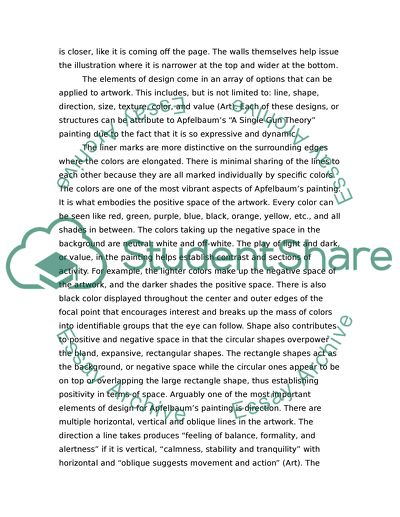Cite this document
(Drawing a Comparison between Single Gun Theory by Polly Apfelbaum and Essay - 1, n.d.)
Drawing a Comparison between Single Gun Theory by Polly Apfelbaum and Essay - 1. Retrieved from https://studentshare.org/visual-arts-film-studies/1576687-comparison-between-two-pieces-of-art-single-gun-theory-by-polly-apfelbaum-and-parents-and-children-by-matthew-ritchie
Drawing a Comparison between Single Gun Theory by Polly Apfelbaum and Essay - 1. Retrieved from https://studentshare.org/visual-arts-film-studies/1576687-comparison-between-two-pieces-of-art-single-gun-theory-by-polly-apfelbaum-and-parents-and-children-by-matthew-ritchie
(Drawing a Comparison Between Single Gun Theory by Polly Apfelbaum and Essay - 1)
Drawing a Comparison Between Single Gun Theory by Polly Apfelbaum and Essay - 1. https://studentshare.org/visual-arts-film-studies/1576687-comparison-between-two-pieces-of-art-single-gun-theory-by-polly-apfelbaum-and-parents-and-children-by-matthew-ritchie.
Drawing a Comparison Between Single Gun Theory by Polly Apfelbaum and Essay - 1. https://studentshare.org/visual-arts-film-studies/1576687-comparison-between-two-pieces-of-art-single-gun-theory-by-polly-apfelbaum-and-parents-and-children-by-matthew-ritchie.
“Drawing a Comparison Between Single Gun Theory by Polly Apfelbaum and Essay - 1”. https://studentshare.org/visual-arts-film-studies/1576687-comparison-between-two-pieces-of-art-single-gun-theory-by-polly-apfelbaum-and-parents-and-children-by-matthew-ritchie.


